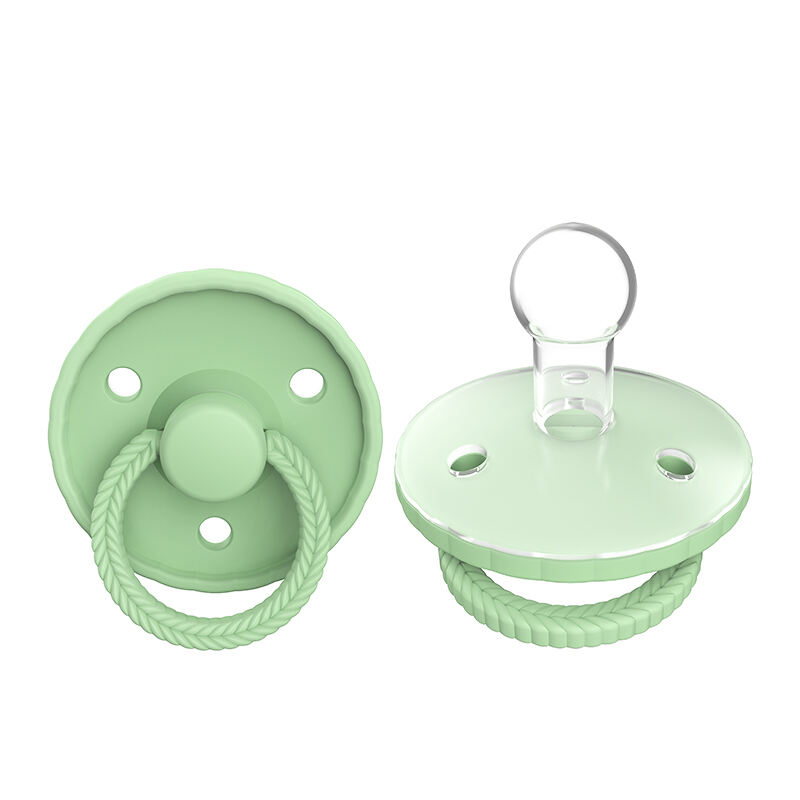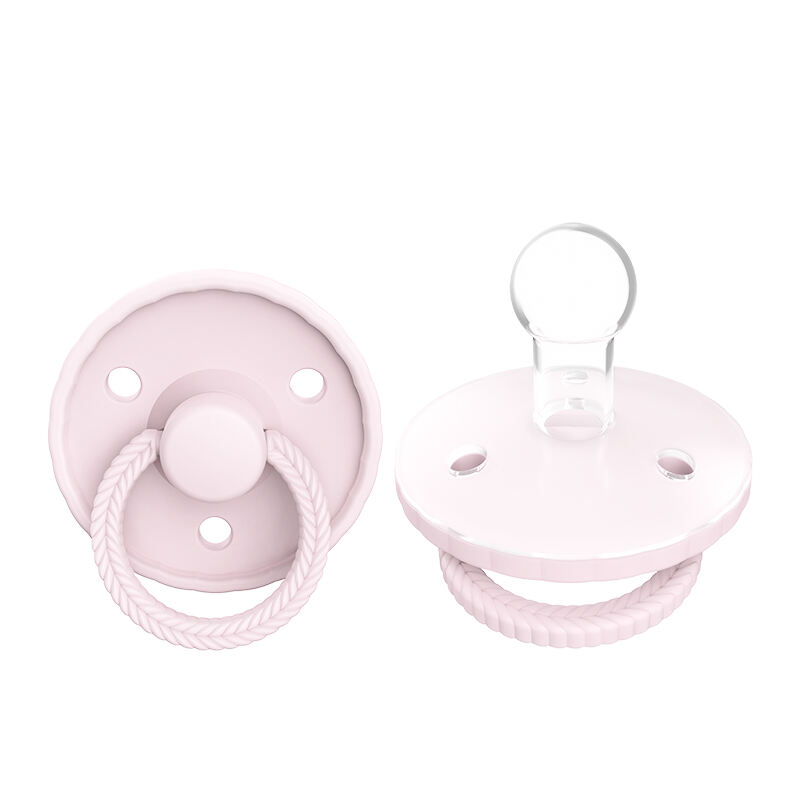Understanding the Lifespan of Baby Pacifiers
Parents often overlook the importance of maintaining and replacing their baby's pacifier regularly. Just like any other baby item, pacifiers experience wear and tear through constant use, exposure to varying temperatures, and frequent sterilization. Understanding when to replace baby pacifier is crucial for your little one's safety, comfort, and overall well-being.
While pacifiers are designed to withstand regular use, they aren't meant to last forever. The materials can degrade over time, potentially exposing your baby to harmful substances or creating safety hazards. Being proactive about pacifier replacement is an essential aspect of responsible parenting that shouldn't be overlooked.
Signs It's Time for a New Pacifier
Visual Indicators of Wear and Tear
Regular inspection of your baby's pacifier can reveal several signs that indicate it's time for a replacement. Look for discoloration, which could suggest material breakdown or bacterial growth. Check for tears, holes, or cracks in the nipple, as these can harbor bacteria and pose a choking hazard. Any sticky or tacky texture on the surface is another red flag that means it's time to replace baby pacifier immediately.
Pay special attention to the shield and knob areas. If you notice any separation between parts or changes in the original shape, these are clear indicators that the pacifier needs replacement. Remember that even minor imperfections can compromise your baby's safety.
Age-Related Replacement Guidelines
Most manufacturers recommend replacing pacifiers every 4-6 weeks, regardless of their apparent condition. This timeline takes into account normal wear from daily use, washing, and sterilization. However, if your baby uses the pacifier frequently or tends to be rough with it, you might need to replace baby pacifier more often.
For newborns and infants under six months, consider more frequent replacements - perhaps every 3-4 weeks - as their immune systems are still developing. As your baby grows, their sucking patterns and strength change, which can affect how quickly pacifiers wear out.

Proper Pacifier Maintenance
Daily Cleaning Protocols
Implementing a strict cleaning routine can help extend your pacifier's lifespan, though it doesn't eliminate the need for regular replacement. Clean the pacifier thoroughly with warm, soapy water after each use, and sterilize it at least once daily. For newborns and young infants, sterilization after each use is recommended.
Avoid using harsh cleaning agents or bleach, as these can damage the pacifier material and potentially create harmful residues. Instead, use mild soap and warm water, or follow the manufacturer's specific cleaning instructions. After cleaning, always inspect the pacifier carefully before giving it back to your baby.
Storage and Handling Best Practices
Proper storage plays a crucial role in maintaining pacifier quality. Store clean pacifiers in a dry, ventilated container away from direct sunlight and heat sources. Avoid leaving them in the car or other places where temperatures can fluctuate dramatically, as this can accelerate material degradation.
When handling pacifiers, always wash your hands first to prevent contamination. Consider designating specific storage areas at home and in your diaper bag to keep pacifiers clean and easily accessible. This organized approach helps ensure you'll notice when it's time to replace baby pacifier.
Safety Considerations and Standards
Material Quality and Regulations
Modern pacifiers are manufactured under strict safety guidelines using materials specifically tested for infant use. Look for pacifiers made from silicone or natural rubber latex, and ensure they comply with current safety standards in your region. High-quality materials typically maintain their integrity longer but still require regular replacement.
Check for certification marks from recognized safety organizations, and always purchase pacifiers from reputable manufacturers. While premium brands might cost more initially, their superior materials and construction often provide better value and safety in the long run.
Size and Age-Appropriate Selection
As your baby grows, their pacifier needs change. Most manufacturers offer different sizes based on age ranges. Using the wrong size can affect oral development and comfort, so it's important to replace baby pacifier with age-appropriate options as your child grows.
Remember that pacifiers designed for newborns won't be suitable for older infants, and vice versa. When replacing pacifiers, always verify you're selecting the correct size for your baby's current age and development stage.
Economic Aspects of Pacifier Replacement
Cost-Effective Purchasing Strategies
While regular pacifier replacement might seem costly, it's a necessary investment in your baby's health and safety. Consider buying multipacks, which often offer better value while ensuring you always have clean backups available. Some retailers offer subscription services for regular pacifier deliveries, which can be both convenient and cost-effective.
Keep track of sales and bulk discounts at trusted retailers, but never compromise on quality for price. The cost of treating potential health issues from using worn-out pacifiers far outweighs the expense of regular replacement.
Building a Replacement Schedule
Creating a system to track pacifier age and condition helps maintain a regular replacement schedule. Mark your calendar or set phone reminders for regular replacements. Some parents find it helpful to label pacifiers with purchase dates or use a rotation system to ensure even wear across multiple pacifiers.
Consider keeping a small emergency fund specifically for baby supplies, including pacifier replacements. This helps ensure you won't delay necessary replacements due to budget constraints.
Frequently Asked Questions
Can I extend my baby's pacifier life through careful maintenance?
While proper care and maintenance can help maintain pacifier quality, they cannot indefinitely extend its safe usage period. Even with perfect care, the materials will naturally degrade over time, making regular replacement necessary for your baby's safety and health.
What happens if I don't replace my baby's pacifier regularly?
Using worn-out pacifiers can pose several risks, including choking hazards from deteriorating materials, increased bacterial growth in damaged areas, and potential exposure to harmful chemicals from degraded materials. Regular replacement helps avoid these safety and health concerns.
Should I replace pacifiers more frequently during teething?
Yes, during teething, babies often chew more aggressively on their pacifiers, which can cause faster wear and tear. During this phase, inspect pacifiers daily for damage and consider replacing them every 2-3 weeks or sooner if signs of wear appear.
How many backup pacifiers should I keep on hand?
It's recommended to keep 3-4 pacifiers in rotation at any given time. This ensures you always have a clean backup available while allowing for proper cleaning and drying time between uses. Having multiple pacifiers also helps you notice wear patterns more easily by comparing them.

